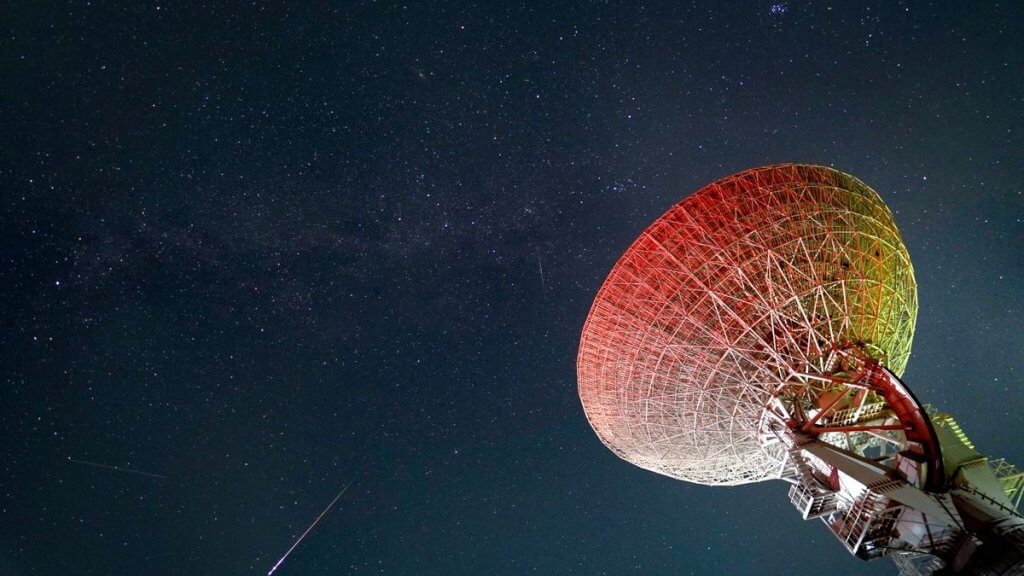The prolific Perseid meteor shower put on quite the show and we’ve rounded up some of the best photos from around the world to prove it.
With the moon only 10% illuminated during the time of the peak — the night of Aug.12 and before dawn on Aug. 13 — viewing conditions for the Perseids were much better than last year which unfortunately saw meteors outshined by the full moon.
The Perseids are caused by Earth passing through debris — bits of ice and rock — left behind by Comet Swift-Tuttle which last passed close to Earth in 1992. The Perseids peak when Earth passes through the densest and dustiest area on Aug. 11-12. Years without moonlight see higher rates of meteors per hour, and in outburst years (such as in 2016) the rate can be between 150-200 meteors an hour!
Don’t worry if you didn’t catch any during the peak, the Perseid meteor shower remains active until around Aug. 24, though fewer meteors per hour will be visible compared to the shower’s peak.
Related: Meteor shower guide: When is the next meteor shower?
Amateur astronomer Fotis Mavroudakis captured this beautiful photograph below on Aug. 13, in the mountains of Drama, a city in northern Greece. The Nestos River flows in the foreground.
“I dedicated several hours to capturing the celestial spectacle,” Mavroudakis told Space.com in an email.
“The clear night conditions allowed me to create an image that not only highlights the meteor’s brilliance but also showcases the grandeur of the cosmos. The meteor’s vibrant trail and the tranquil expanse of the night sky combine to create a sense of wonder and fascination.”
In the image below a Perseid meteor streaks across the sky along the Sphinx Door at the Ancient City of Hattusa, in the Bogazkale district of Corum, Turkey on Aug. 13, 2023.
A Perseid meteor lights up the sky on Aug.13, 2023 in Golog Tibetan Autonomous Prefecture, Qinghai Province of China.
Here, a Perseid meteor streaks across the sky in Leon, Spain.
The Sarpincik Lighthouse wasn’t the only spectacle lighting up the skies in the Karaburun district of Izmir, Turkey on Aug.13.
Below, a long Perseid train shines over the historical Phrygian Valley near Ihsaniye, in the Afyonkarahisar district, Turkey.
Amateur astrophotographer Richard Rajah (Instagram @_astrorich) caught some Perseid meteors and an impressive fireball when meteor hunting at Fremont Peak Observatory, California, U.S.
“Watching meteors and fireballs streak through the night was every bit as fun as watching the first one,” Rajah told Space.com in an email.
“Finding out that I managed to catch a few on my camera made my 80-mile trip outside the city definitely worthwhile.”
In the photograph below, above the lush green countryside in Ratnapura, Sri Lanka, a bright Perseid meteor streaks alongside the star-studded Milky Way.
The incredible green hue of a bright Perseid meteor is evident in this image captured on Aug. 13 above the abandoned historic caravanserai, near Garmsar in Semnan province 77 miles (123 kilometers) southeast of Tehran, Iran.
Several Perseids were spotted above the Lick Observatory at Mount Hamilton in California, United States.
A bright Perseid meteor lights up the sky in Golog Tibetan Autonomous Prefecture, Qinghai Province of China.
Skywatchers gather in the Karacabey district of Bursa, Turkey on Aug. 12 to watch the prolific Perseid meteor shower.
A bright Perseid meteor shines alongside the bright lights of White Lake, North Carolina, U.S.
The stunning image below shows the Perseid meteor shower in full swing above the National Observatory Miyun Station in Beijing, China.
The Perseid meteor shower lit up the skies above the Makhtesh Ramon area of Negev Desert, southern Israel.
A long Perseid train shines over the historical Phrygian Valley in Ihsaniye district of Afyonkarahisar, Turkey.
If all these Perseid photos have inspired you to up your photography game check out our best cameras for astrophotography and our how to photograph a meteor shower guide for some help and advice.
Let us know if you take a nice photo of the Perseid meteor shower (or any other night sky target)! You can send images and comments to spacephotos@space.com.

